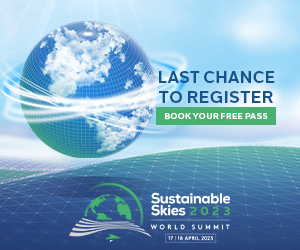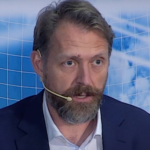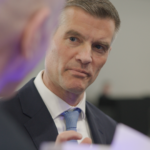Collaboration is more important than ever as engine manufacturers work on new technologies to power today’s and future aircraft types, said Grazia Vittadini, Chief Technology Officer at Rolls-Royce, and Frank Preli, vice president, Propulsion and Materials Technologies at Pratt & Whitney, at the Sustainable Skies World Summit 2022.
This year’s Sustainable Skies World Summit takes place on 17 – 18 Apr 2023. SSWS returns to showcase and support industry’s efforts towards meeting its net zero commitment, now given further impetus by the adoption by world governments of an aspirational net zero goal for aviation at the ICAO Assembly in October.
Collaboration
Speaking in 2022, Vittadini explained: “Continuously improving the efficiency with step changes in technology to make our gas turbines more efficient with the portfolio of technologies on the Ultra Fan demonstrators, minus 25% fuel burn, minus 40% NOx emissions, minus 35% noise emissions. So this is a fundamental element of our strategy, couple that with 100% Sustainable aviation fuel use, you unlock great potential, we need to continue harnessing on.
“This is where collaboration is more important than ever, and we’re working together with EasyJet, for instance, at Rolls Royce to really understand infrastructure operation implications around hydrogen, around sustainable aviation fuel. But let’s not forget it’s also about electrical flying, right. So really leveraging the fact that Rolls Royce is a broad power based company. We’re joining forces between the divisions Rolls Royce Electrical and Rolls Royce Power Systems, to develop also recharging infrastructure for EVTOLs and commuter operations. So we need to tackle the full scope end to end.”
Electrical generation capacity
Preli added: “We heard about SAF infrastructure, we’re hearing about hydrogen, as if they’re separate. If you pick one, you’re liable to fail. If you think about what both need … they need electrical generation capacity. And so how do you convince the world to put all that generation capacity in if, when they’re done, there’s only a handful of aircraft to fuel with hydrogen. So I think really a winning strategy is use that electrical generation capacity as you build it for power to liquids because you have a ready made market today for that fuel. And then as you evolve hydrogen aircraft, you would then start to convert that electrical generation capacity to make hydrogen.”


